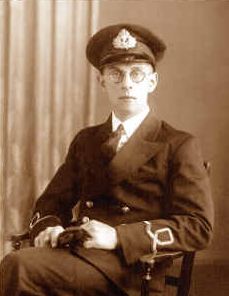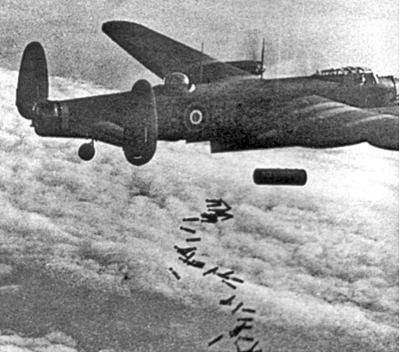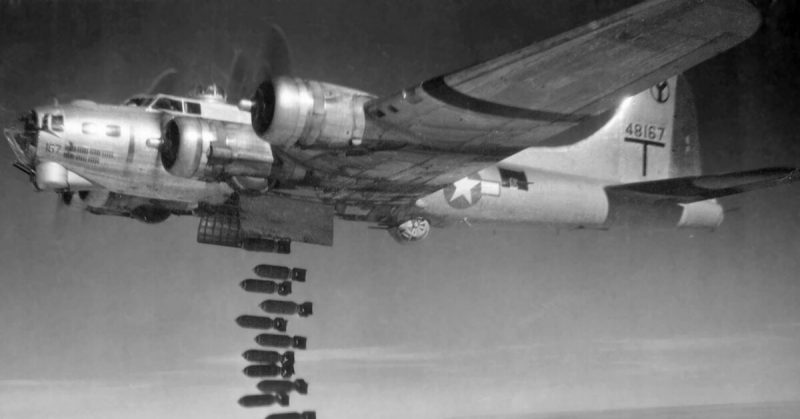Unexploded munitions are a problem in war. Bombs and mines need to be deactivated to ensure operations can continue. It is difficult, dangerous, highly skilled work.
One of the greatest bomb-disposal operatives of the Second World War was John Bridge.
Teacher Turned Soldier
John Bridge was born in a small town in Cheshire, England in 1915. After school, he went to university at King’s College, London, where he studied physics and then became a teacher. Not long after Bridge got his job, the Second World War broke out.
Learning His Craft
At the start of the war, the Royal Navy assembled a list of science graduates it might call upon for specialist work. In 1940, it advertised for physics graduates to train in bomb and mine disposal.
Bridge applied for one of those jobs. The idea of using his qualification to help save lives was very appealing to him. Following his interview, he was commissioned as a sub-lieutenant in the Royal Navy Volunteer Reserve. He was part of the first wave of eight recruits. Most of the others were physics teachers like him.
These recruits were given three and a half days of training in bomb disposal with the RAF and two and a half days with the Navy learning to defuse mines. After only a week of training, it was time to start their job.

Bomb Disposal in the Blitz
John Bridge was now a bomb safety officer responsible for devices in the Plymouth-Falmouth area on Britain’s south coast. He and his team defused over a hundred devices beginning with his first in July 1940.
The following March, during a period of intense German bombing, Bridge defused a complicated double fused bomb with a ticking timer at the Devonport dockyard.
In May, he defused a bomb that had fallen into a 30-foot-deep shaft between dry docks at Falmouth. It involved winching the bomb out of six feet of water and then disarming it in a tiny space from which there was no escape if things went wrong.
Moving on to Mines
John Bridge was building upon his minimal training, turning himself into an expert in his field.
After the Plymouth-Falmouth posting, he served in Portland, Scotland, and then South Africa. These posts saw him expand his work into dealing with mines. He liked to keep busy, and use was made of his talent.
In South Africa, he taught mine and bomb disposal to other staff at the Simonstown naval base. His training as a teacher came in handy. He also took a diving course.
Moving on to Egypt, Bridge was underused. There was some harbor clearance work but little else for which he was required. Discovering a colleague was about to be sent to the new Italian front, Bridge volunteered to take his place.
He was off to Sicily and the most active front of the war in Europe.
Messina Harbor
Bridge’s first stop in Sicily was Messina harbor. It was a place that would keep him very busy.
The Germans had filled the harbor with booby-trapped depth charges before leaving. No-one knew how to dispose of them. One had already blown up a seven-man disposal team, leaving five dead and two severely wounded.
Bridge interviewed the survivors, then headed out to the harbor. Diving to a depth of forty feet, he worked in incredibly difficult conditions. He separated two depth charges with a controlled explosion then brought them to the surface to study. Having worked out their mechanism, he set to defusing those that remained.
He worked flat out for three days, diving 27 times until ordered to stop and rest. He and his team eventually dealt with 207 depth charges at Messina, clearing the harbor.
When finished he mended the neglected dry docks, using skills he had learned in Scotland. There was no challenge he was unwilling to try.
Messina harbor was ready in time for the Allied invasion of mainland Italy.

D-Day and On
After Italy, Bridge joined the Allied invasion of Normandy, landing on D-Day plus one. There, he oversaw the clearance of explosives on the Arromanches beaches.
Three months later, he cleared mines from the port of Antwerp and the River Scheldt. As the Allies advanced, the Germans did all they could to obstruct their progress. Bridge helped clear a safe passage for men and supplies.
Bridge Over the River Waal
Late in September 1944, he was suddenly flown to Nijmegen. German attacks had stalled an Allied advance at the River Waal. German frogmen, including an Olympic swimmer, had laid explosive charges against the bridge there. They needed to be defused urgently.
An unidentified device was attached to the bridge beneath the water. Stripping to his underwear, Bridge leaped into the river. By touching it with his bare feet, he identified the device. He secured it, had it hoisted out of the river, and defused it in the confines of an assault boat.
Honored for his Work
On his return to England, Bridge was made a Lieutenant Commander. After the war, he returned to education, eventually becoming Director of Education for Sunderland Borough Council.
For his services, Bridge was awarded a George Medal for defusing a delayed fuse bomb in December 1940. For the double fuse bomb at Devonport in March 1941 he earned a King’s Commendation for Brave Conduct. A Bar was added to his George Medal for saving the Falmouth dry docks in May 1941.
A humble physics teacher had saved countless lives and done much to help the Allied cause, not by killing but by dismantling devices of death.
Source:
Gordon Brown (2008), Wartime Courage.
